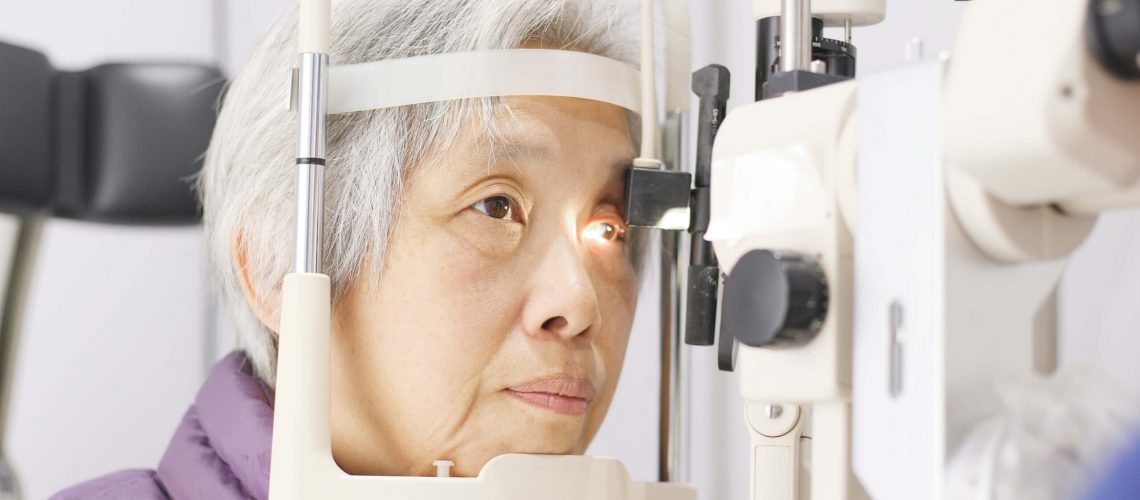
What are the risks of Cataract Disease to a patient's Quality of Life?
Cataracts can affect patients differently depending on their visual needs and expectations. Decreased quality of vision can lead to decreased confidence in performing regular activities of daily living. A visual decline caused by a cataract can present as many different patient complaints, including;
- decreased confidence driving at night or in an unfamiliar environment,
- dissatisfaction with their new glasses,
- frustration with their inability to comfortably perform near tasks such as reading and stitching,
- glare sensitivity and;
- Overall dissatisfaction with their quality of vision.
Visual impairment is associated with falls in older patients, subsequently having a serious impact on overall patient well-being, causing many implications on a patient’s quality of life as decreased vision can lead to;
- decreased overall self-confidence
- falls and accidents, and
- ultimately loss of independence significant mortality.[1]
Hence, it is vital to maintain optimum visual function to minimise its effects on a patients’ quality of life. Studies have shown that improved visual function following cataract surgery has been associated with better quality of life.[2]
[1] Ivers RQ, Cumming R, Mitchell P, et al. Visual impairment and falls in older adults: The Blue Mountains Eye Study. J Am Geriatr Soc. 1998;46:58–64.
[2] Desai P, Reidy A, Minassian DC, et al. Gains from cataract surgery: visual function and quality of life. Br J Ophthalmol. 1996;80:868–73.
How long can patients have a cataract before surgical intervention is required?
Determining when surgical intervention is required involves a holistic approach to the patient, starting with their presenting symptoms and complaints. For example, patients who are bothered by their quality of vision, confirmed with clinical testing, provide a greater motive for the surgeon to suggest an intervention.
Typically at the clinic, a decline in visual acuity to a level that does not meet the driving standard (6/12 on Snellen chart) is the most significant indicator for intervention, particularly when the patient wants to maintain their driving licence. This is a significant motive for intervention for the vast majority.
On the other hand, some patients may have significant cataracts (which should require intervention), yet their visual needs do not appear affected. In this scenario, an Ophthalmologist may suggest that they should be monitored closely—either way, both types of patients should be assessed regularly.
In patients over the age of 60, it is essential that annual eye examinations are maintained to diagnose early cataract changes, monitor its progression and suggest when surgical intervention is required. Also, it is advised that patients who have noticed changes to their mobility and agility should have their eyes examined to rule out any visual involvement in their symptoms. Poor vision can affect the quality of vision; it can affect depth perception, contrast, and vision in dim environments. These can all create many problems for a patient if not diagnosed and treated accordingly.
When speaking with an elderly patient who has accepted deteriorating vision as a part of the `aging process', what are some key messages?
Yes, developing cataracts is a part of the aging process. Yet, we are very fortunate to access technology and medicine to allow cataracts to be treated successfully with minimal risks involved. Cataract surgery is one of the most performed procedures worldwide, restoring sight to many people every day. In addition, many patients obtain a better quality of vision post-operatively, allowing improvement in their quality of life and enjoying life to the fullest.
With a population that lives longer, it is essential to maintain our health, especially vision, to the best that science can provide. Maintaining good eyesight, especially as we get older, has proven to affect the quality of vision and, ultimately, quality of life.
Since cataracts are known to progress over time, early intervention can further minimise the risks involved with the procedure. Therefore, if a patient is symptomatic, the doctor may suggest an intervention to improve the patient’s quality of vision and life regardless of the degree the cataract has progressed.
What are the red flags symptoms to be aware of following cataract surgery?
Red flag symptoms to be aware of are;
- A sudden decrease in vision post-operatively, especially within the first week after their procedure. The window of infection is within the first week; therefore, it is imperative to stress the importance of good eye hygiene and compliance with the drops to protect the eye. Also, we advise patients to avoid swimming pools and beaches, dusty environments and not to get soap or water into the eye.
- Pain or pressure sensation on or around the treated eye (including brow region).
- Flashing lights
- Floaters
- Unusual discharge
- Red-eye
- It is stressed to patients that they should advise their doctor of any concerns post-operatively to ensure that the eye recovers well and to allow for early intervention if needed.



